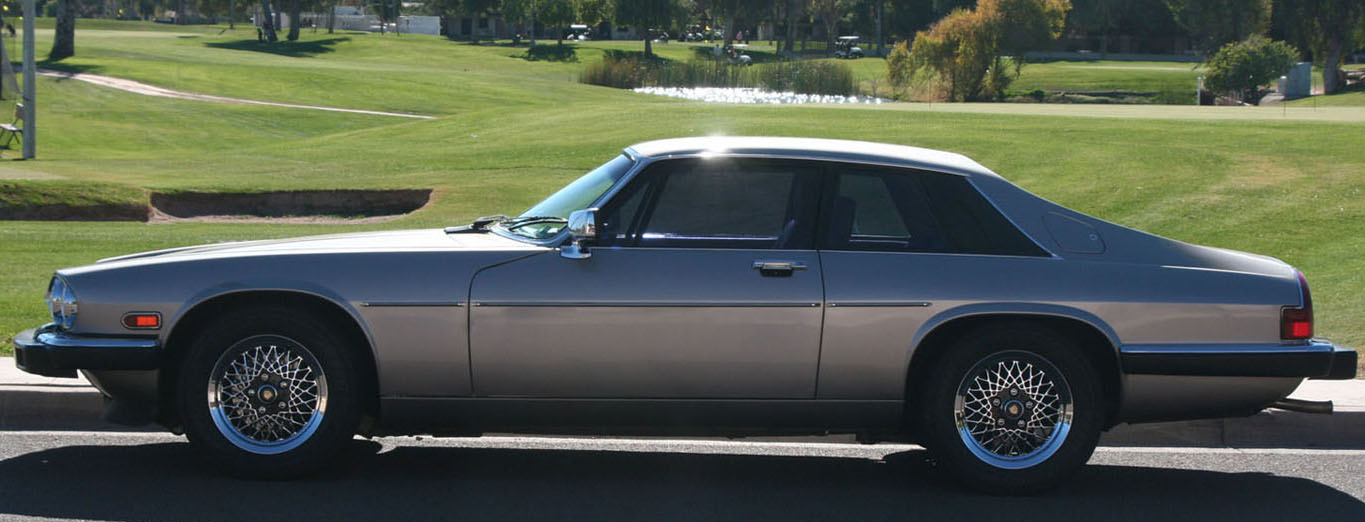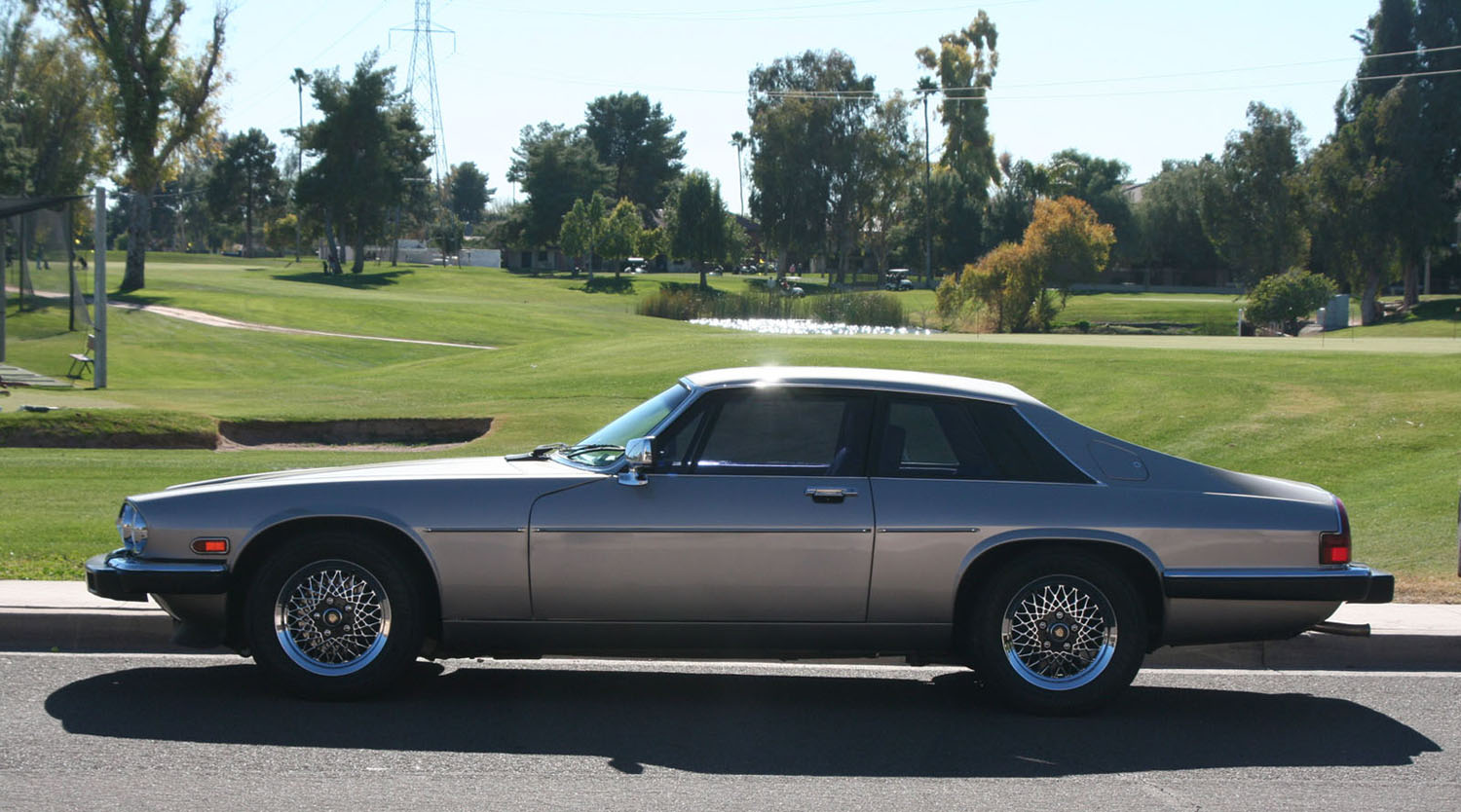
The XJS is a high performance luxury automobile. Its style was so popular that it had 21 years of production.
Price: $8,000 $2,000 (Sorry, it's been sold. I keep this page up so I can remember it.)
Mileage: 66,800
Engine: V12, 5.3 Liter HE (high efficiency), electronic fuel injection.
Hydrocarbons grams/mile: Standard is 1.60 Test result: 0.25
CO Idle grams/mile: 15.00 Test result: 7.66
Hydrocarbons under Load: Standard is 300 ppm. Test result: 38 ppm.
NOx grams/mile: Standard is 2.50. Test result: 0.80.
Summary: The engine runs cleanly and efficiently.
VIN #: SAJNA5844KC153779
Wheels and Tires: Notice the beautiful cross lace mesh wheels. Jaguar introduced these in late 1988. Tires are Yokohama 225/60VR15 (AVS dB S2). These tires are about 1/2 inch shorter than stock tires, but were highly recommended for the XJS and handle very well. Less than 500 miles on the tires.
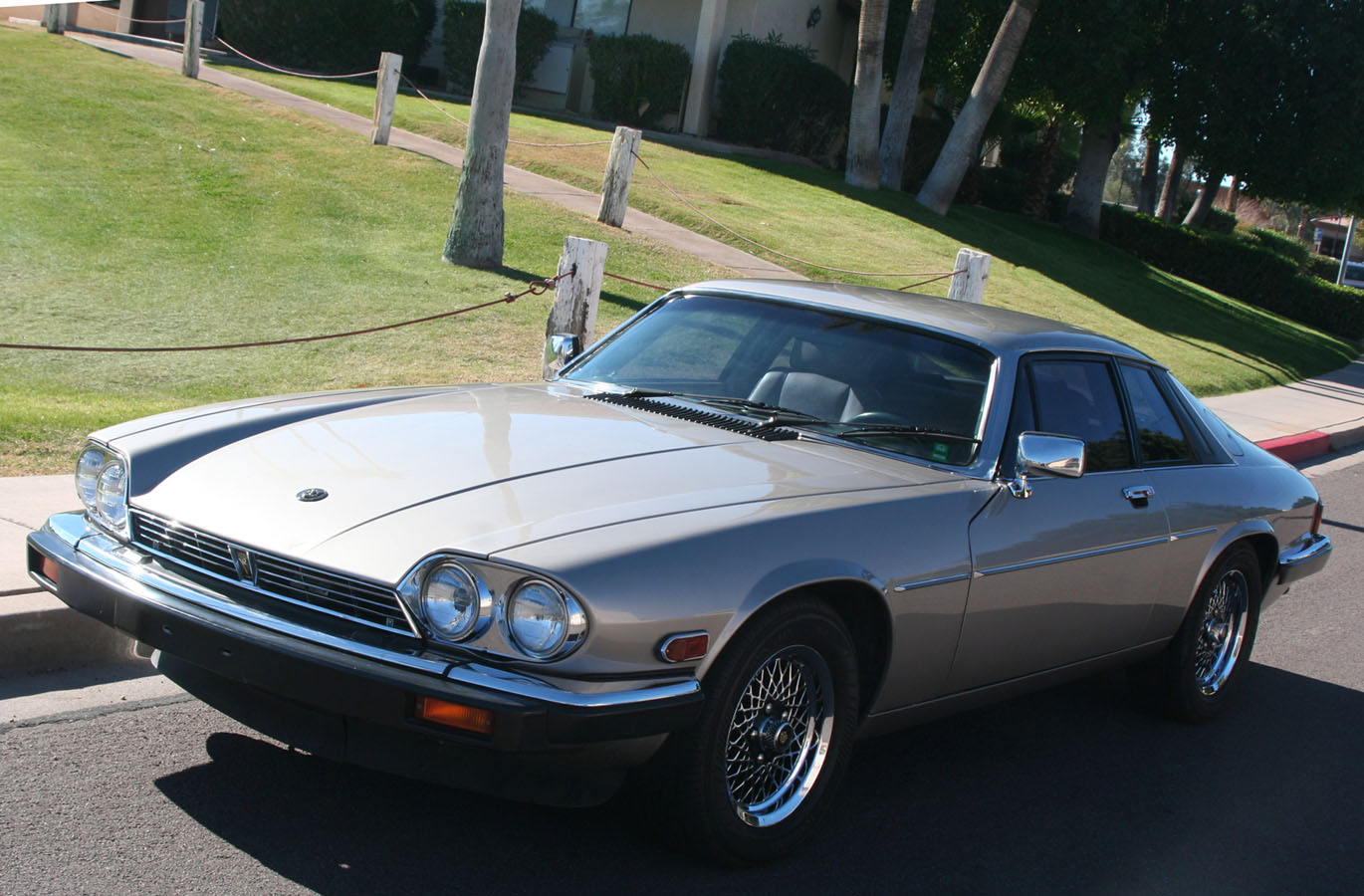
The car is is great condition. There are some blemishes on the paint on the roof and on the side, but not very noticeable.
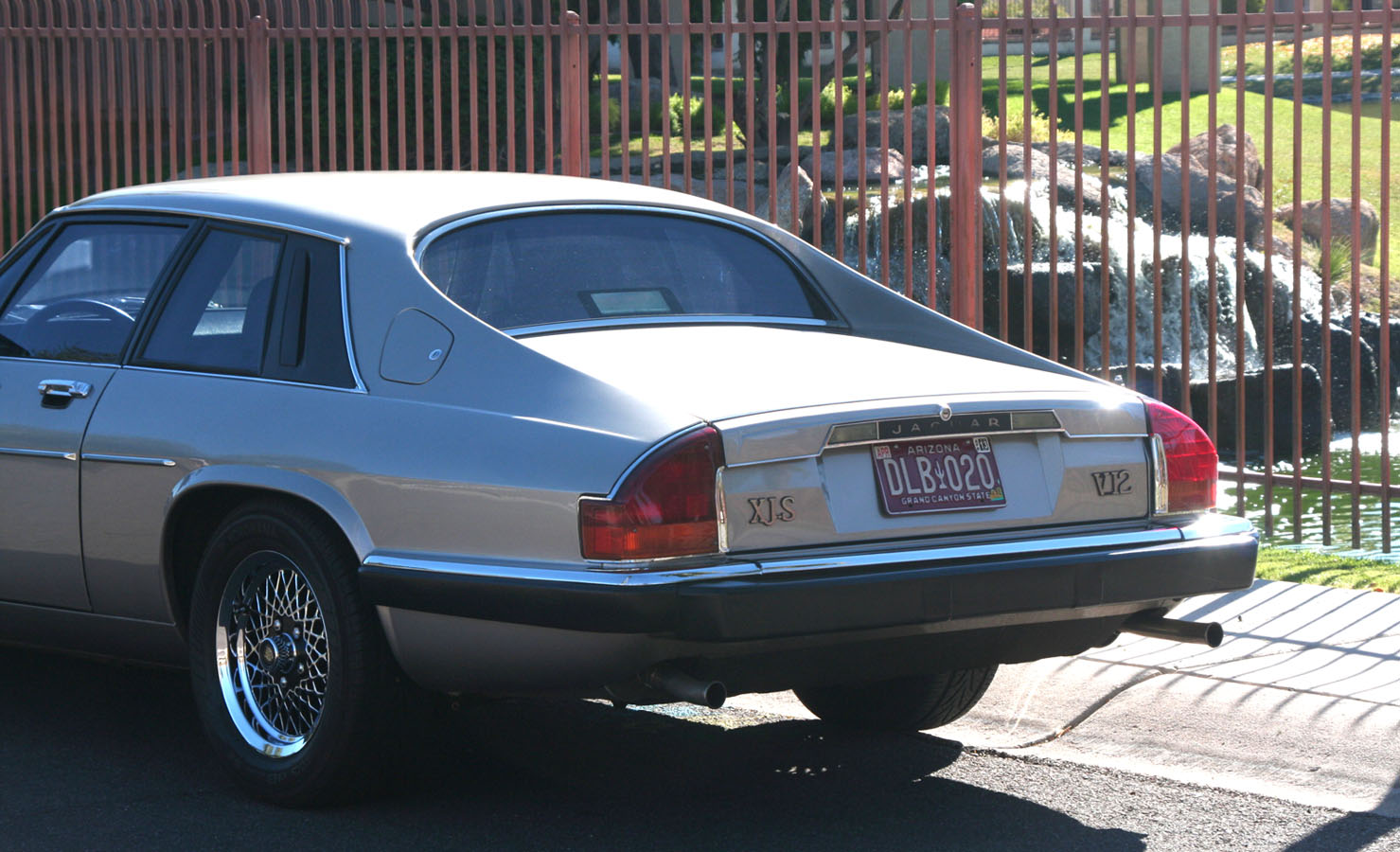

Interior: The interior is in very good condition. The driver's seat shows some wear. The rear seats look brand new because they've never been sat in.
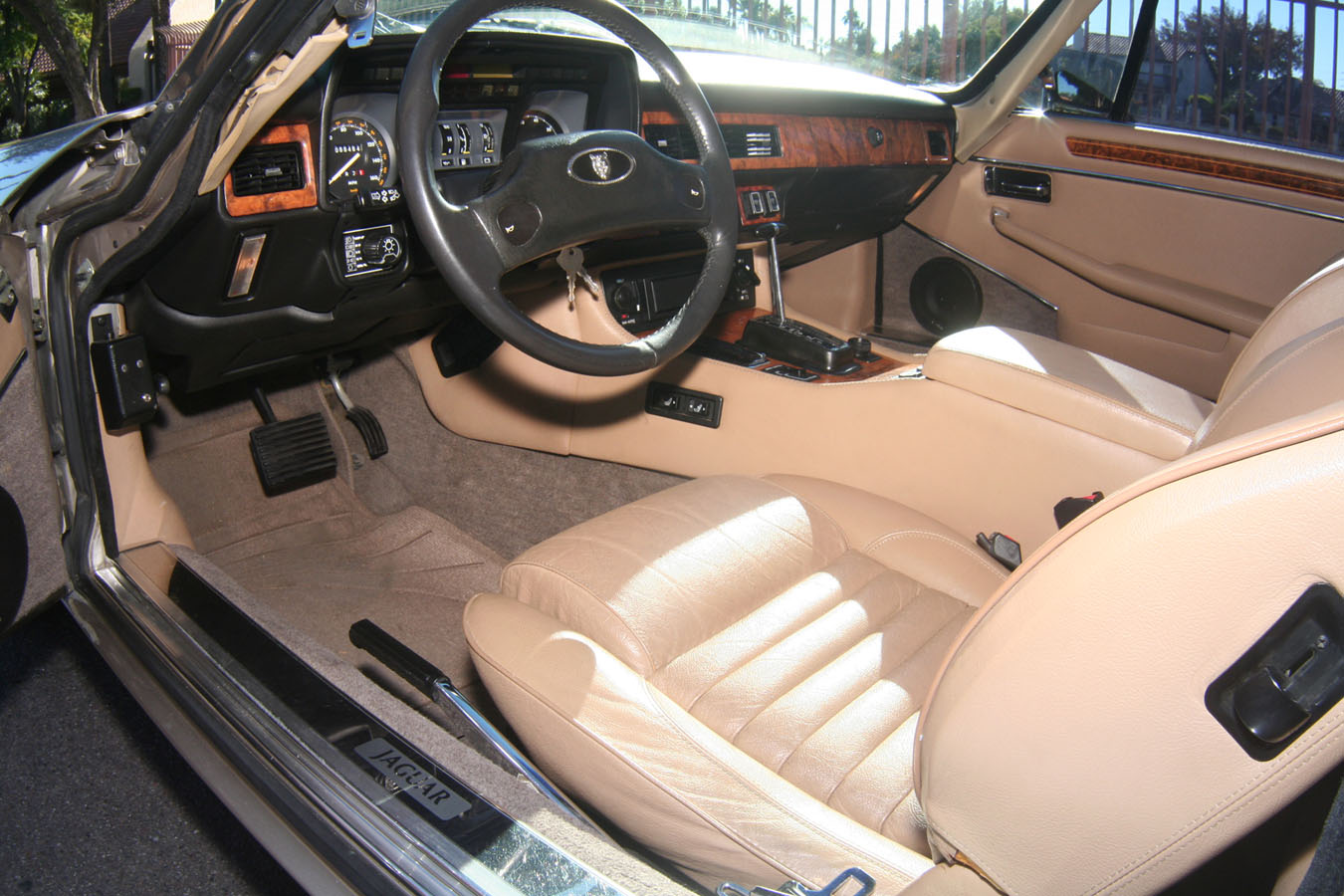
Interior: The below image shows the interior from the passenger side. The wood is in good shape with just a few cracks.
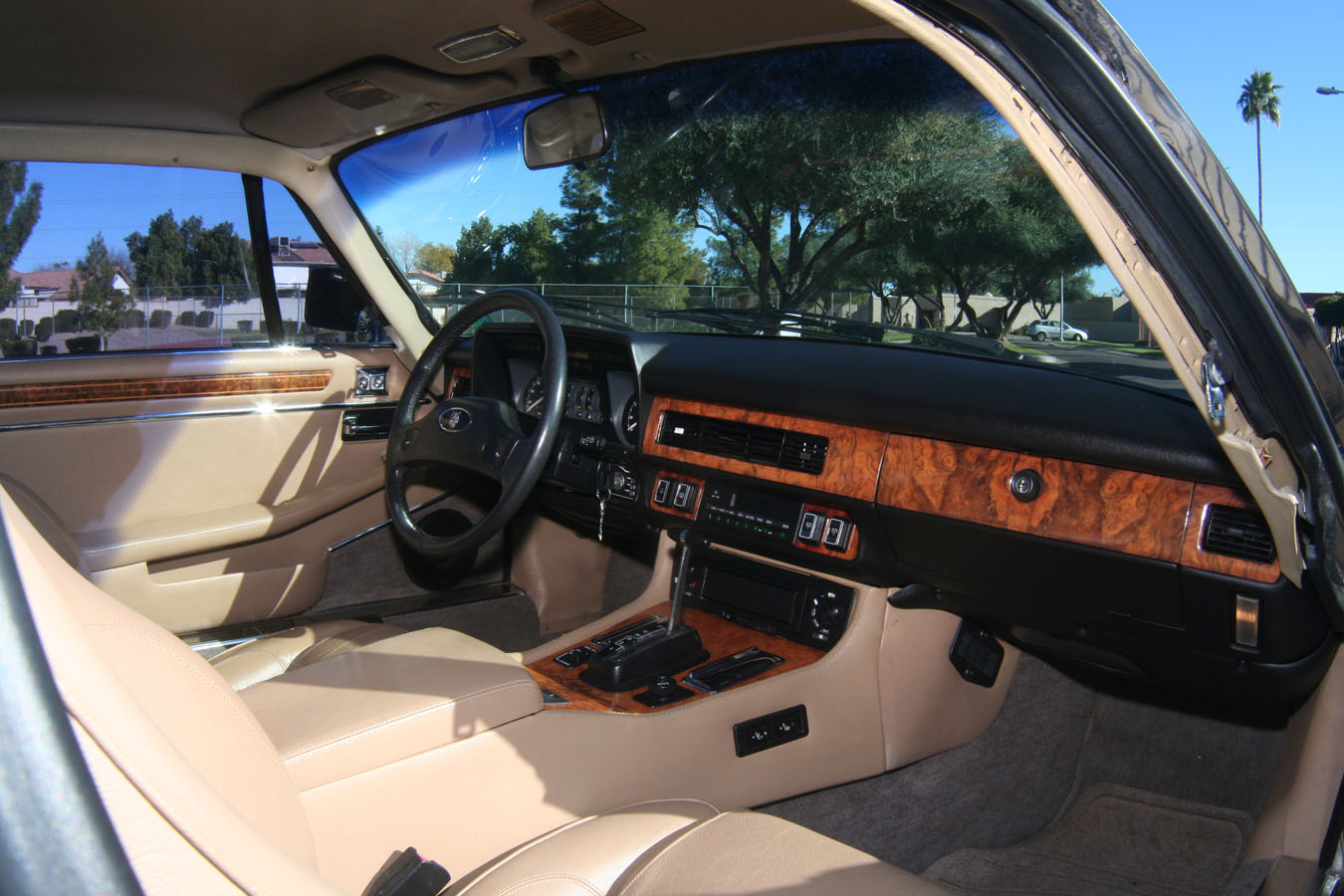
Console: The below image shows the center console. The 4 large buttons work, but the trip computer doesn't work anymore. It has two ashtrays, but I'm sure they've never been used. I don't believe the speed control (cruise control) is working. It has a nice radio/CD player which has a face plate that covers it when the key is off; however, the face plate doesn't always retract when the key is on. I usually have to tap on it. It's probably because I don't drive the car very often.

Console: Below is another photo of the console taken with a fish eye lens. So it's a bit distorted but you see more of the interior.
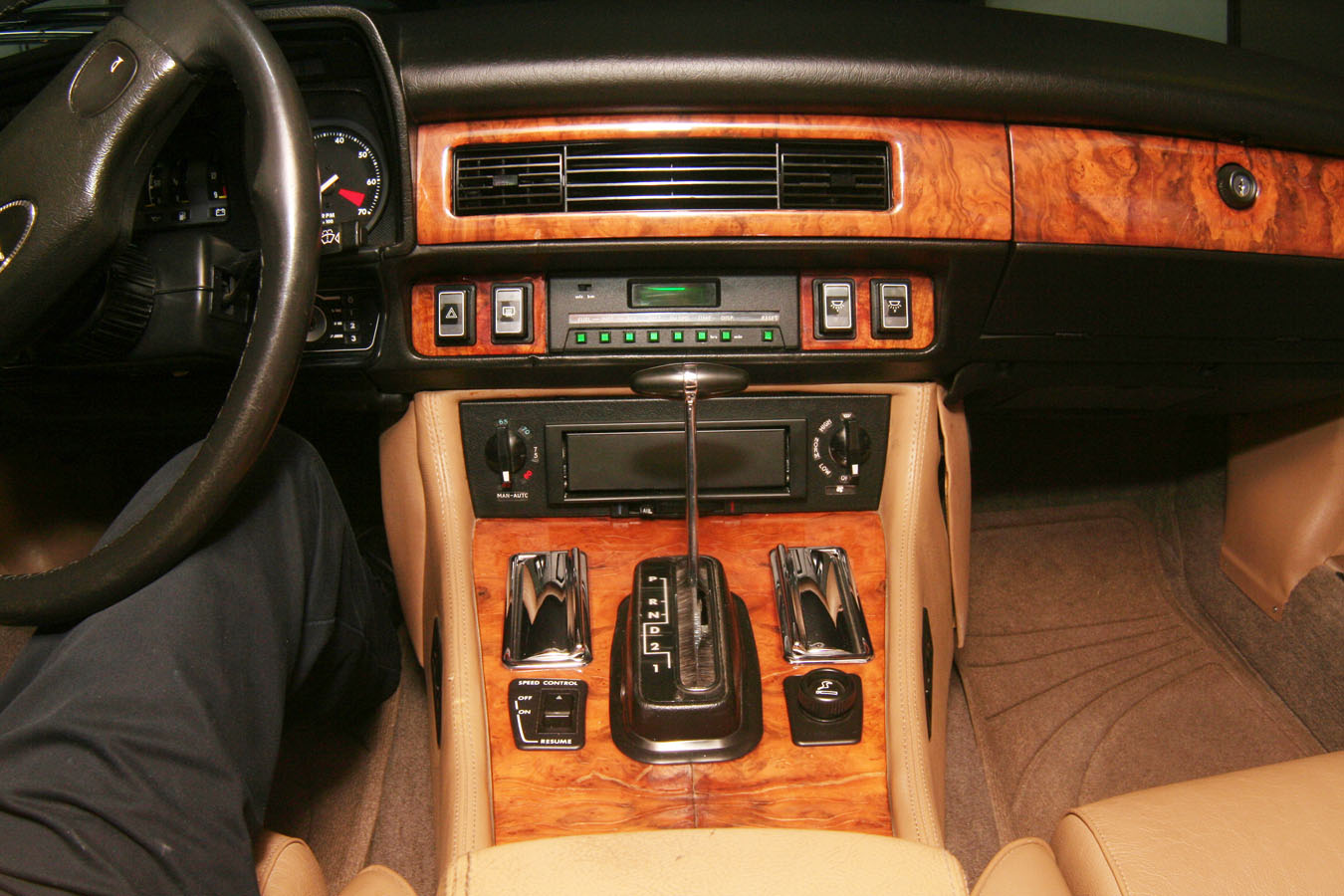
Steering Wheel & Instrument Panel: The below image shows the close-up of the steering wheel and instrument panel. Notice the 160 mph speedometer, which makes sense on a Jaguar. Also notice the red line for the engine at 6500 rpm. That's great for a 5.3 Liter engine. The odometer shows a low mileage of 066491, which is close to what it is now. All gauges work even though the center four are sometimes off by about 25%.
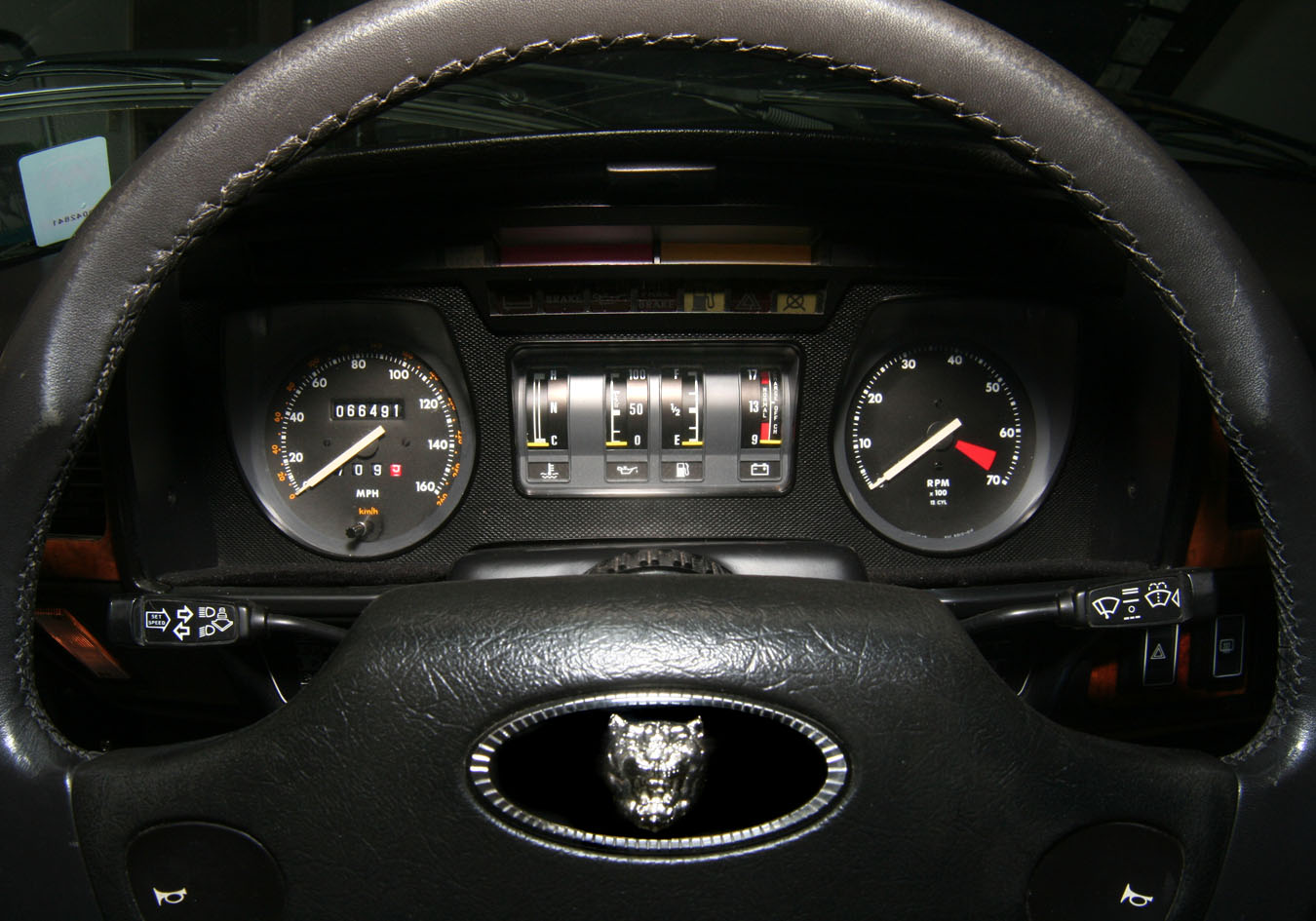
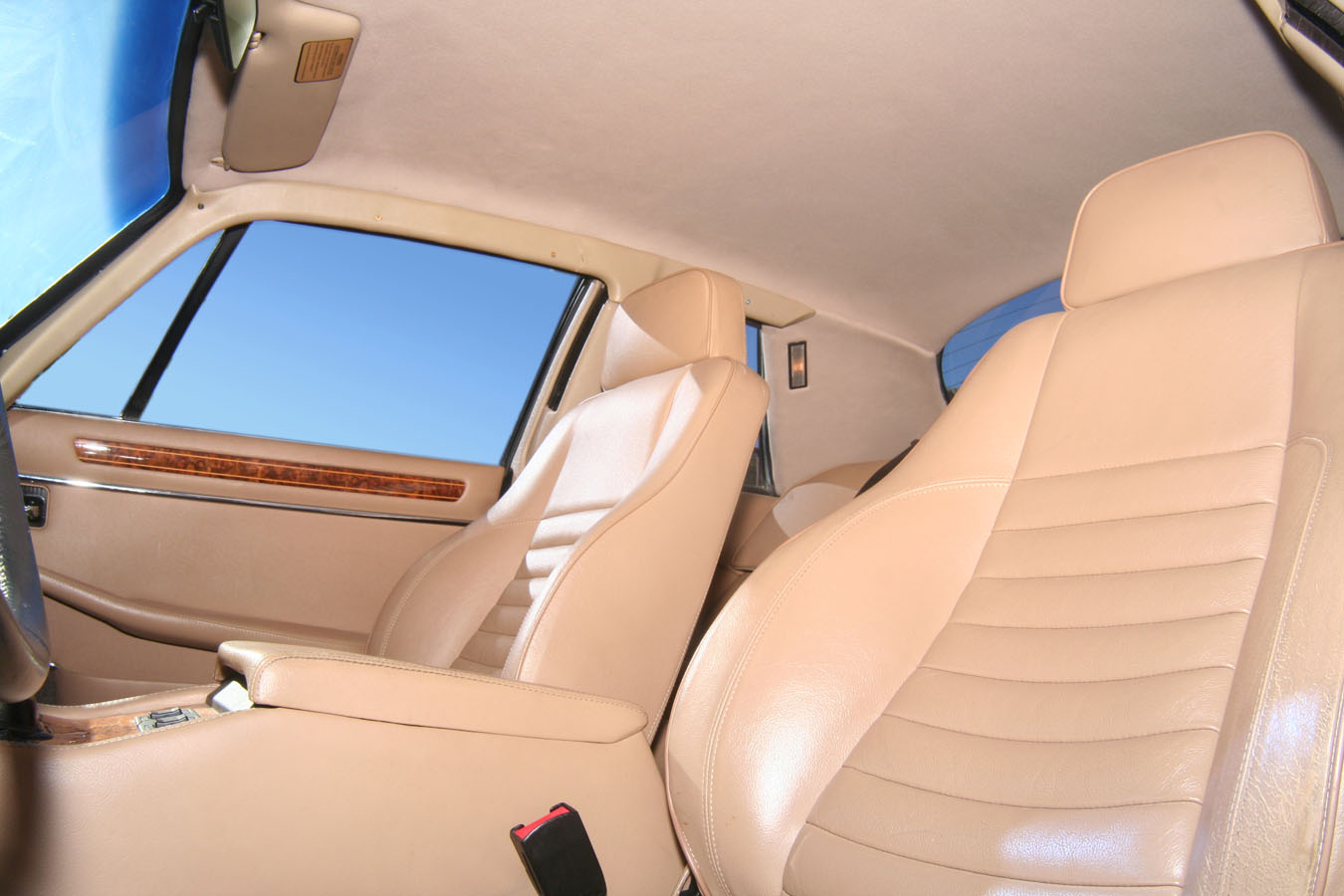
Trunk: Below is a view of the trunk. It's in good shape. The spare time looks flat, but that's just the way the cover makes it look. I do notice some of the carpet at the top is sagging. I will take care of that. The black compartment to the right of the spare tire holds the battery. The advantage of a rear battery is that it is protected from the engine heat. So it lasts longer. On the left side, but not showing, is the scissors jack that came with the car. It is stored in a heavy duty cloth case that matches the carpet. I also have a nice Jaguar fabric car cover that I will give with the car. It's a tan color.
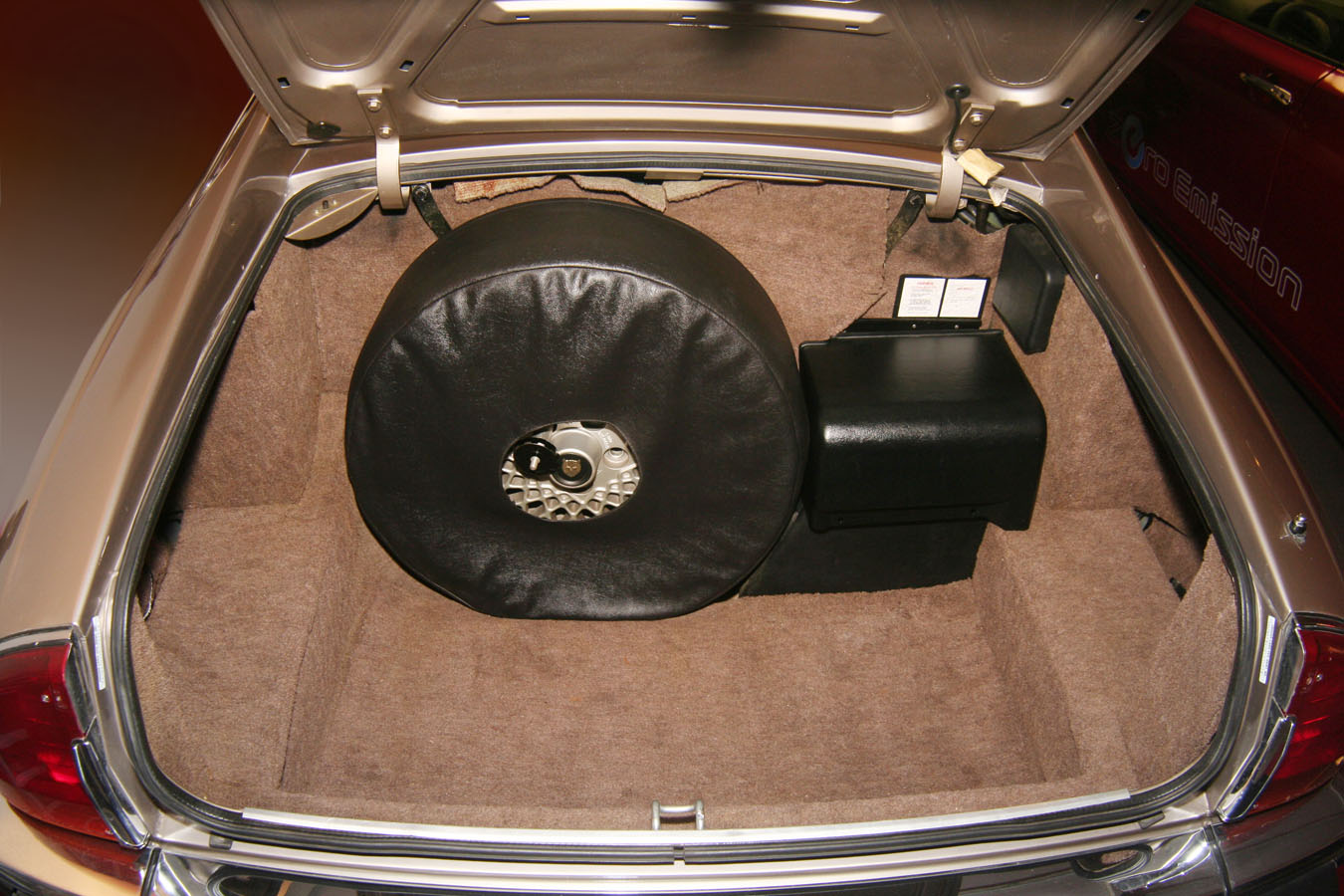
Generator: Below you see the engine compartment. I had a custom hood liner made a few years ago because the old one was looking kind of ratty. The radiator system has been recently overhauled ($1500). There are less than 500 miles since a $2000 tune up (plugs, wires, distributor cap, all injectors checked and more. I also had all fuel hoses that go to the fuel rails replaced with high quality rubber and clamps. So there are no gas leaks anywhere. Last month I had a starter relay replaced along with the accumulator for the brake system ($750).
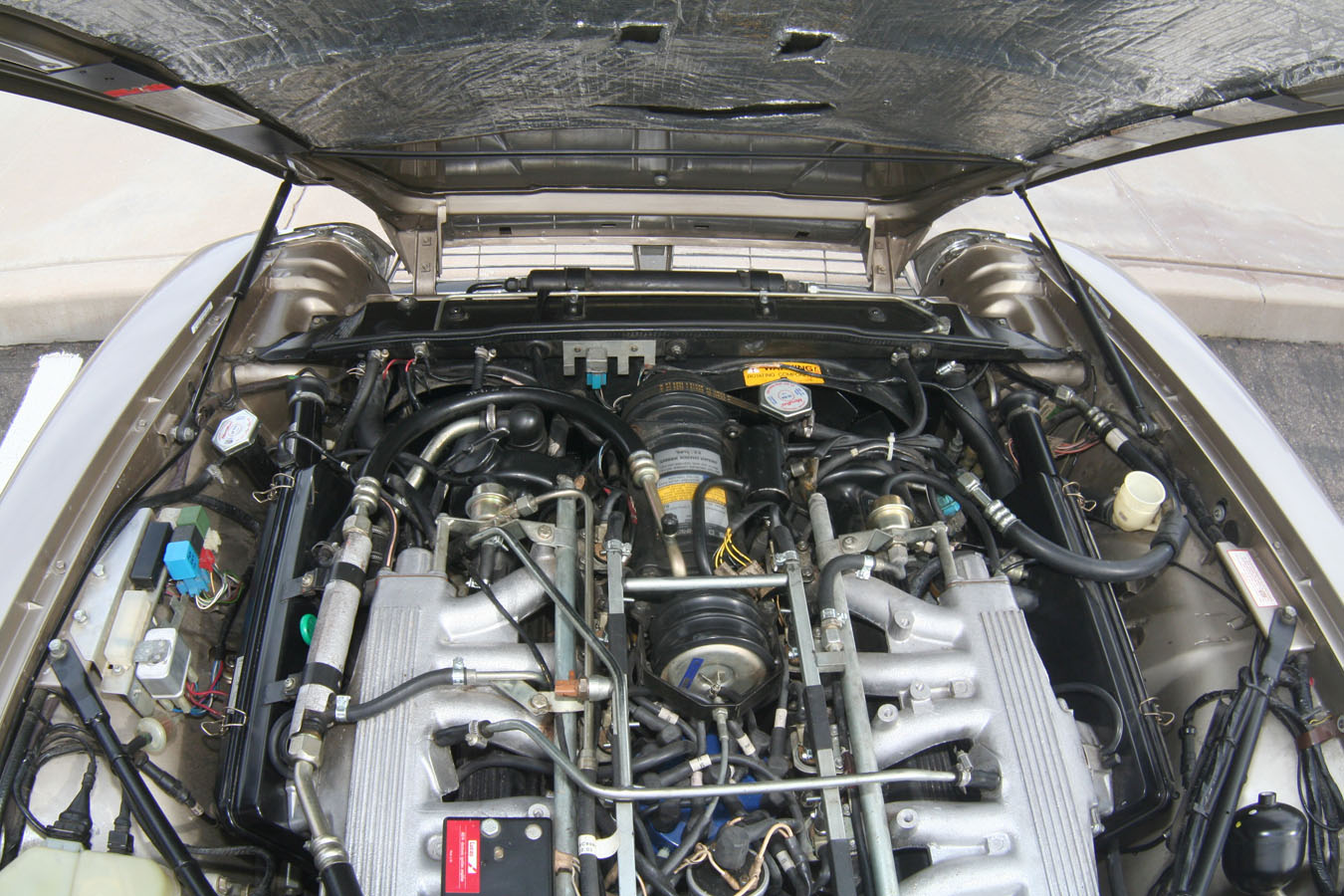
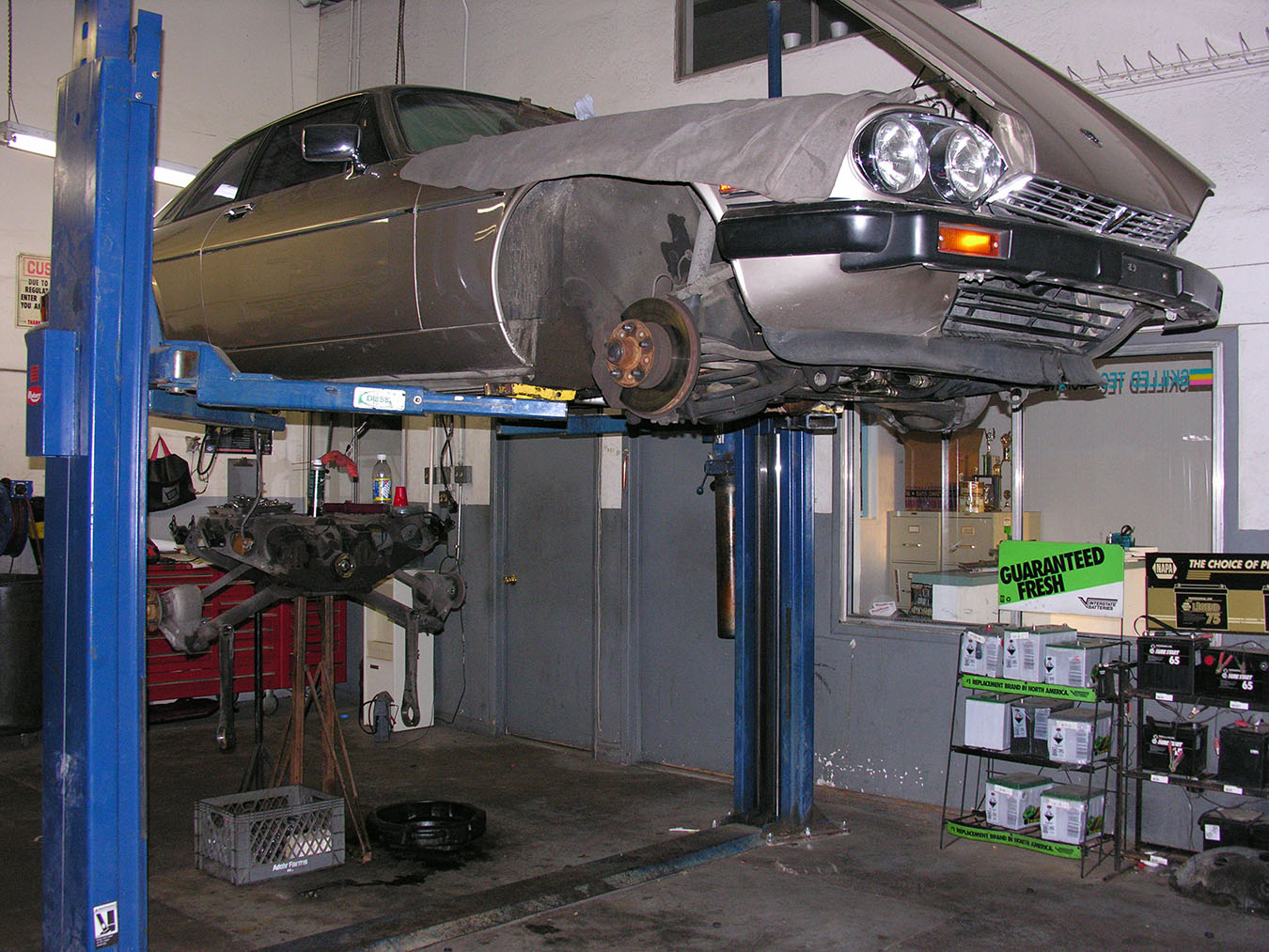
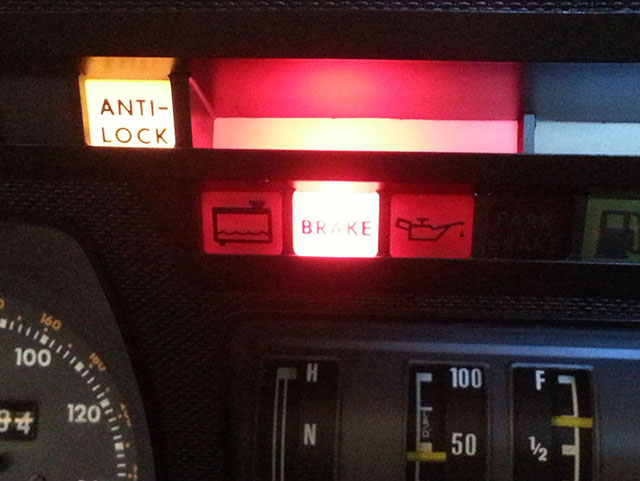
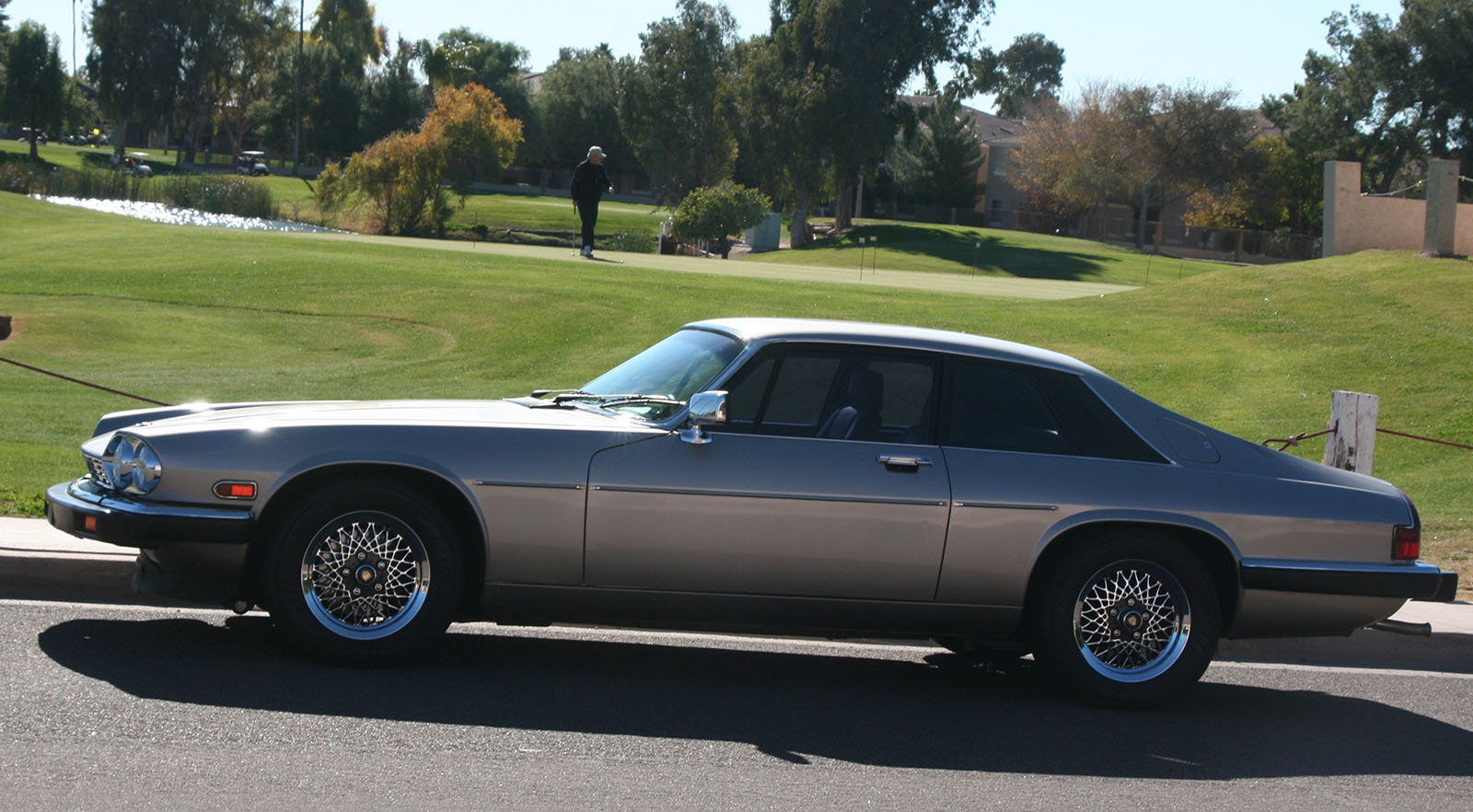
"Jaguar warrants that for the life of the vehicle, repairs required to correct defects in the mechanical and electrical components of the motorized automatic diagonal seatbelt system will be performed without charge."
I know that since that bulletin came out in 1994 there has been a couple of ownership changes for Jaguar. So I'm not sure if they would honor that policy. The technical bulletin was more technical than I would be able to do the troubleshooting myself.
3. Passenger side door and back panel have slightly different colors. See below photo. A person rarely will notice it unless they are told to look for it. The angle has to be just right to see it also.
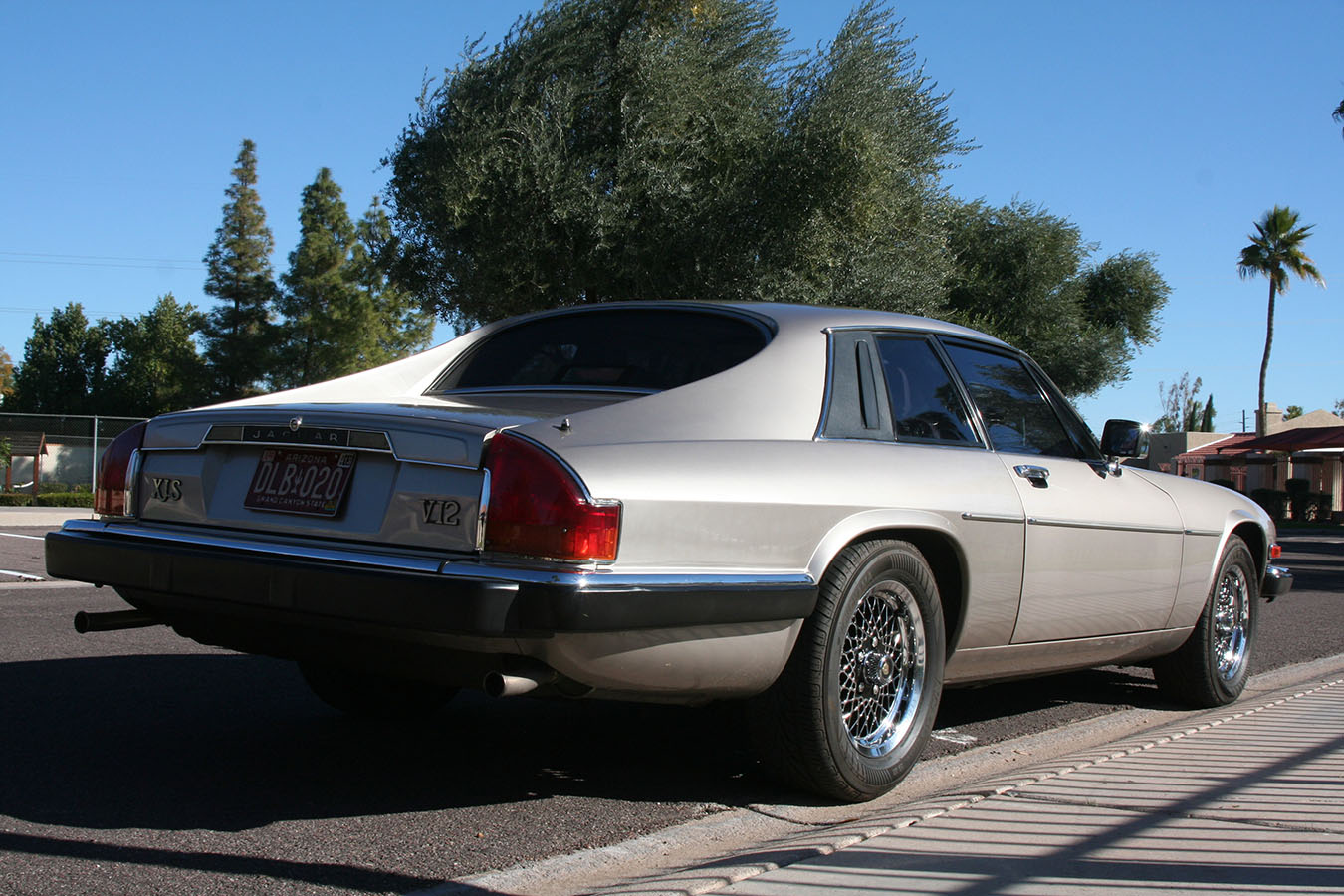
Here is another photo of the same side. The color difference is not noticed.
4. There's a 1.25 inch crease at the front of the hood. How it got there is strange. A neighbor had a 4' x 8' piece of plywood on his driveway during some construction. A strong wind picked it up and blew it into the side of my garage. It gouged a hole in the stucco and pushed over some shelves I had up against the wall inside the garage. The shelves fell on the Jaguar's hood and it caused the crease. I had a $500 deductible and the estimate to repaint the hood was $500. That's when I considered painting the whole car rather than just the hood so that the crease would be fixed plus some blemishes in paint on the roof. See the below photo to see the crease. It's just right and below of the Jaguar insignia on the hood. This photo also shows the cracked spoiler under the front bumper. The crack is just to the right of center.
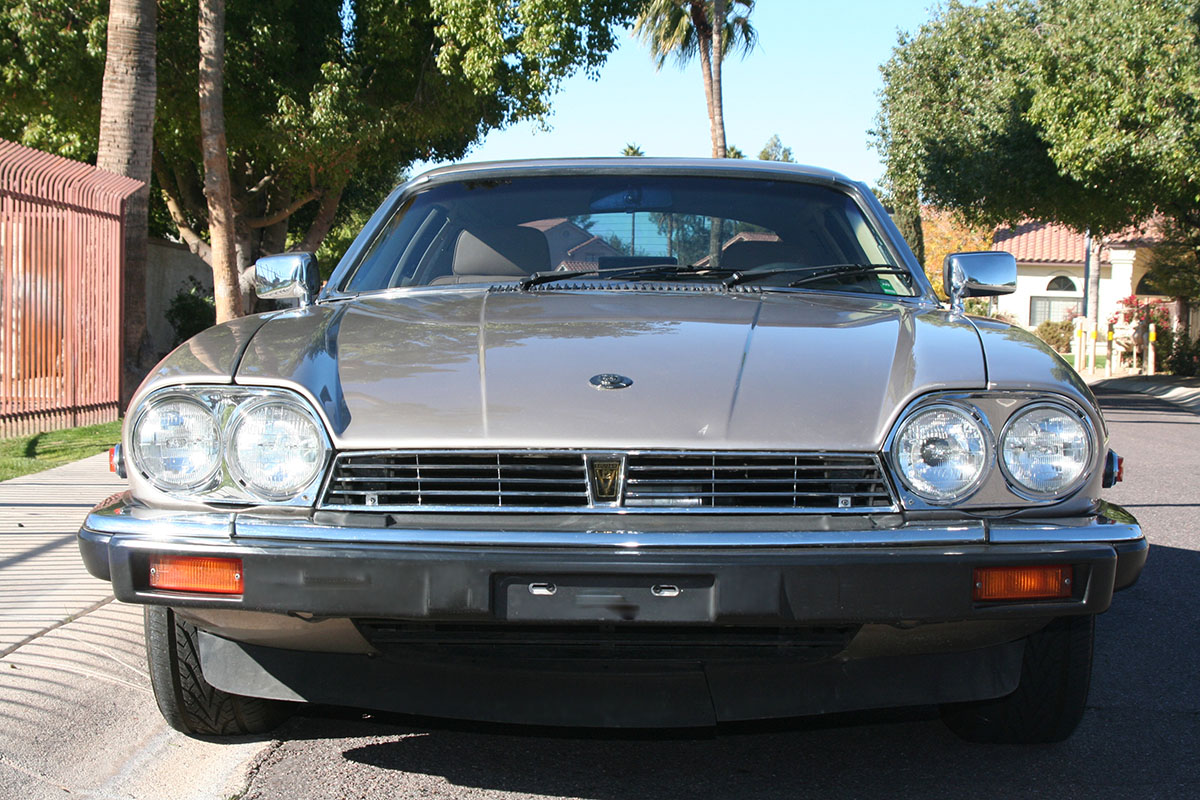
Again, 99.8% of the car works and looks great. It's the 0.2% that has issues that we notice. Despite these issues, the car runs and looks great. It's just the recent loss of power brakes that puts a damper on it.
